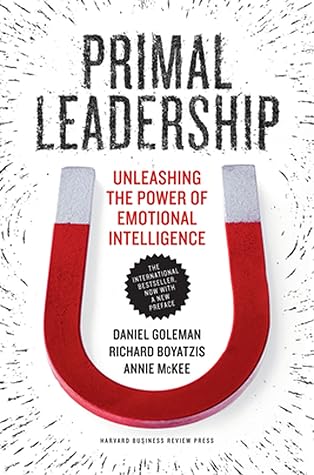More on this book
Community
Kindle Notes & Highlights
Read between
October 6 - October 28, 2018
getting people to really embrace change requires attunement—alignment with the kind of resonance that moves people emotionally as well as intellectually.
Warren Bennis, University of Southern California professor and renowned leadership expert, has called attunement “managing attention through the vision”—something he says is the leader’s fundamental responsibility, as is using the group ideal to focus people’s efforts.
While building strong, open relationships in the company, Dadiseth was careful to keep his eye on his goal: to improve the organization’s performance. As he put it, “Comfort in relationship brings discomfort in accountability,” and he made sure that relationships didn’t get too cozy. So even as he called on the company’s leadership to see their connections to employees as important to the business, he also insisted on a new sense of accountability: to the company, to one another, and to their own values.
Focus people’s attention on the underlying issues and solutions to create common ground and understanding about what needs to change and why. By helping to articulate problems and surfacing the covert, hidden habits that people take for granted, the real state of the organization becomes apparent and is a motivating force for change.
Visions change, but as the vision evolves, the leader needs to be sure that the “sacred center”—what everyone holds as paramount—remains intact. That’s the first challenge: knowing what the sacred center actually is—from the perspective of others, not just oneself.
Tuning people in to a meaningful vision has integrity at its heart: People need to feel as if they can reach for the organization’s dream without compromising their own dreams, their own beliefs, and their values.
For most leaders, and even most managers, it is not more clarity about the strategy that will make the difference. It is not yet another five-year plan, and it is not another mundane leadership program. What makes the difference is finding passion for the work, for the strategy, and for the vision—and engaging hearts and minds in the search for a meaningful future.
People change when they are emotionally engaged and committed.
people relied on the affiliative leadership style. The warm relationships that managers established with their direct reports were powerful drivers of loyalty and dedication—resulting in lifelong commitment, hard work, and strong, trusting relationships. That affiliative style also meant, however, that these managers hesitated to expose areas where people needed to improve, and it made real coaching difficult to pull off. Although managers tried to compensate by using elaborate performance-management systems and holding people accountable for the numbers, often people would still go for years
...more
Using one’s preferred learning styles works best: David A. Kolb, Experiential Learning: Experience as the Source of Learning and Development (Englewood Cliffs, NJ: Prentice-Hall, 1984). 22. Typical learning styles: Ibid.; and David A. Kolb, Richard E. Boyatzis, and Charalampos Mainemelis, “Experiential Learning Theory: Previous Research and New Directions,” in Perspectives on Thinking, Learning, and Cognitive Styles, eds. Robert J. Sternberg and Li-fang Zhang (Mahwah, NJ: Lawrence Erlbaum Associates, 2001), 227–248. Other references are available at http://www.learningfromexperience.com. 23.
...more
For a thorough review of the foundational research, see Arthur D. Colman and W. Harold Bexton, eds., Group Relations Reader 1 (Washington, DC: A.K. Rice Institute, 1975), and Arthur D. Colman and Marvin H. Geller, eds., Group Relations Reader 2 ( Jupiter, FL: A.K. Rice Institute, 1985).
Group emotional intelligence: Vanessa Urch Druskat and Steven B. Wolff, “Group Emotional Intelligence and Its Influence on Group Effectiveness,” in The Emotionally Intelligent Workplace: How to Select For, Measure, and Improve Emotional Intelligence in Individuals, Groups, and Organizations, eds. Carey Cherniss and Daniel Goleman (San Francisco: Jossey-Bass, 2001). See also Vanessa Urch Druskat and Steven B. Wolff, “Building the Emotional Intelligence of Groups,” Harvard Business Review, March 2001, 81–90.


